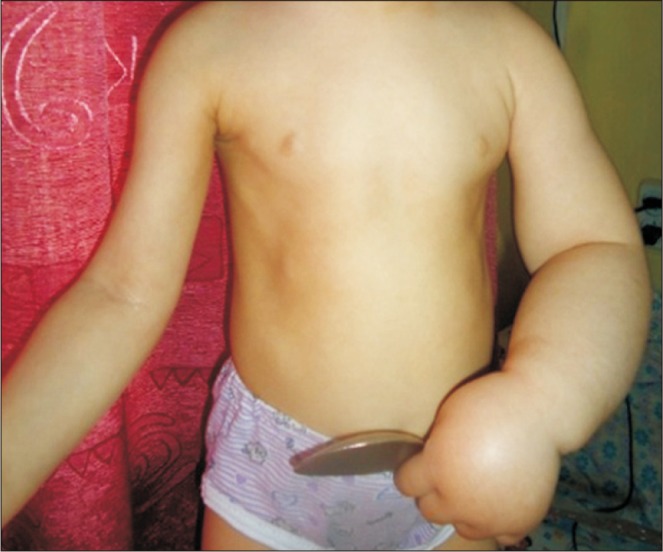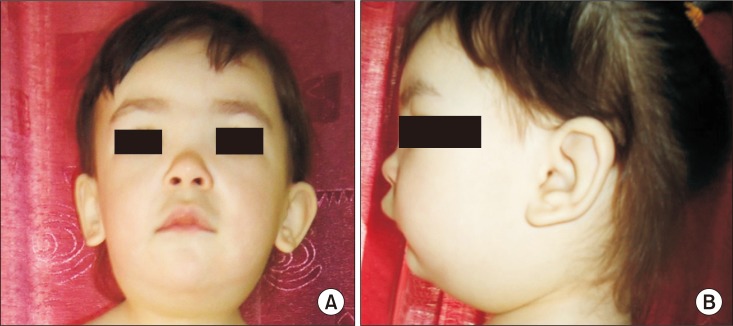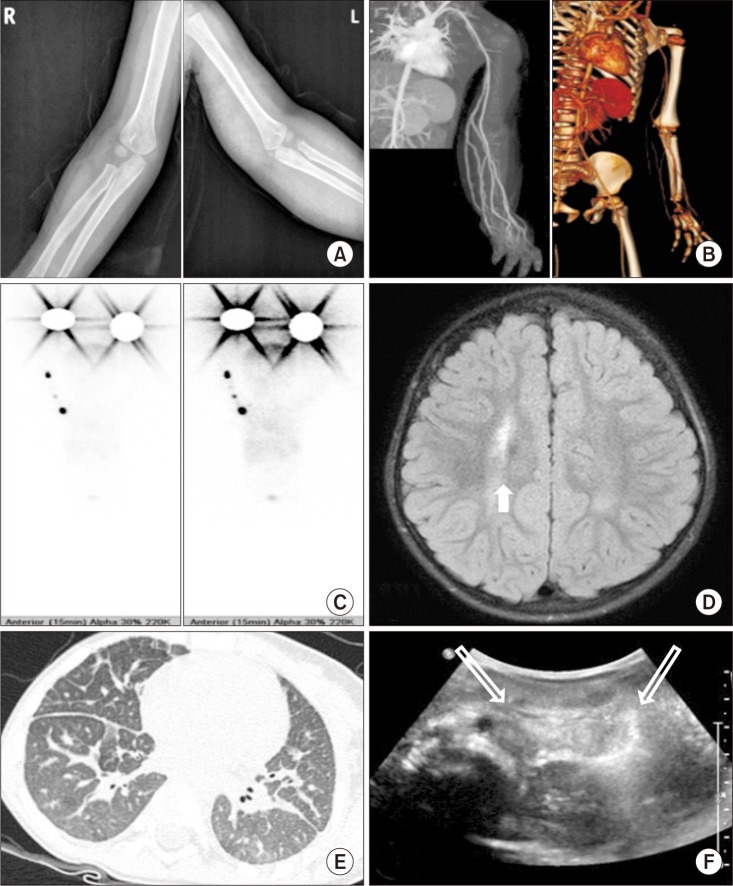Ann Rehabil Med.
2018 Feb;42(1):184-188. 10.5535/arm.2018.42.1.184.
Hennekam Syndrome: A Case Report
- Affiliations
-
- 1Department of Rehabilitation Medicine, Hanyang University College of Medicine, Seoul, Korea. kimmjreh@hanyang.ac.kr
- KMID: 2440985
- DOI: http://doi.org/10.5535/arm.2018.42.1.184
Abstract
- Hennekam syndrome is a rare autosomal recessive disorder resulting from malformation of the lymphatic system. The characteristic signs of Hennekam syndrome are lymphangiectasia, lymph edema, facial anomalies, and mental retardation. This is a case in which a patient presented with left-arm lymphedema, facial-feature anomalies, and multiple organ lymphangiectasia consistent with symptoms of Hennekam syndrome. There is no curative therapy at this time, but rehabilitative treatments including complete decongestive therapy for edema control appeared to be beneficial.
Figure
Reference
-
1. Hennekam RC, Geerdink RA, Hamel BC, Hennekam FA, Kraus P, Rammeloo JA, et al. Autosomal recessive intestinal lymphangiectasia and lymphedema, with facial anomalies and mental retardation. Am J Med Genet. 1989; 34:593–600. PMID: 2624276.
Article2. Rao BS, Vani MS, Kanth BS. Hennekam lymphangiectasia syndrome. Int J Res Med Sci. 2015; 3:516–519.
Article3. Van Balkom ID, Alders M, Allanson J, Bellini C, Frank U, De Jong G, et al. Lymphedema-lymphangiectasia-mental retardation (Hennekam) syndrome: a review. Am J Med Genet. 2002; 112:412–421. PMID: 12376947.
Article4. Alders M, Hogan BM, Gjini E, Salehi F, Al-Gazali L, Hennekam EA, et al. Mutations in CCBE1 cause generalized lymph vessel dysplasia in humans. Nat Genet. 2009; 41:1272–1274. PMID: 19935664.
Article5. Alders M, Al-Gazali L, Cordeiro I, Dallapiccola B, Garavelli L, Tuysuz B, et al. Hennekam syndrome can be caused by FAT4 mutations and be allelic to Van Maldergem syndrome. Hum Genet. 2014; 133:1161–1167. PMID: 24913602.
Article6. Cormier-Daire V, Lyonnet S, Lehnert A, Martin D, Salomon R, Patey N, et al. Craniosynostosis and kidney malformation in a case of Hennekam syndrome. Am J Med Genet. 1995; 57:66–68. PMID: 7645602.
Article7. Bellini C, Mazzella M, Arioni C, Campisi C, Taddei G, Toma P, et al. Hennekam syndrome presenting as nonimmune hydrops fetalis, congenital chylothorax, and congenital pulmonary lymphangiectasia. Am J Med Genet A. 2003; 120:92–96.
Article8. Al Sinani S, Rawahi YA, Abdoon H. Octreotide in Hennekam syndrome-associated intestinal lymphangiectasia. World J Gastroenterol. 2012; 18:6333–6337. PMID: 23180957.




